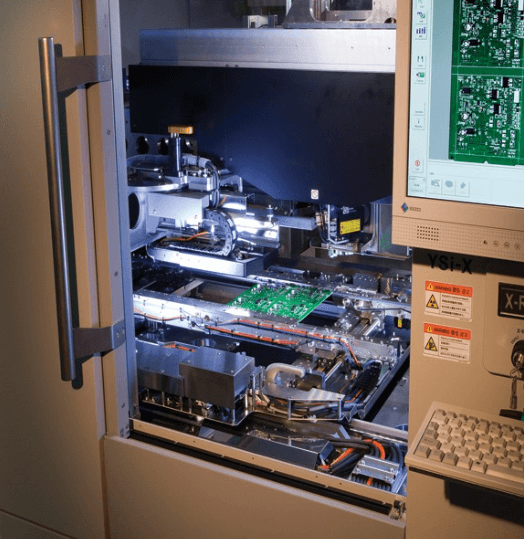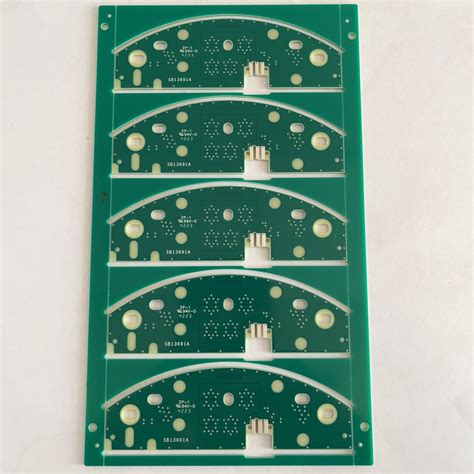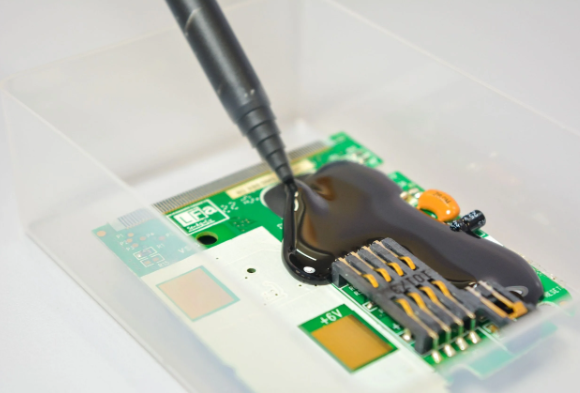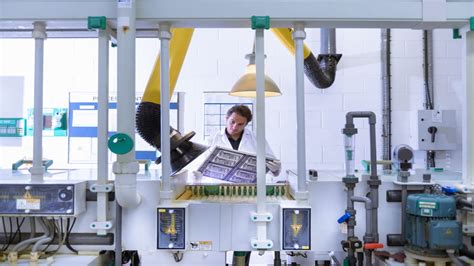Pcb x ray machine
Benefits Of Using A PCB X Ray Machine In Quality Control
The utilization of a PCB X-ray machine in quality control processes offers numerous benefits that significantly enhance the reliability and performance of electronic devices. As the complexity of printed circuit boards (PCBs) continues to increase, traditional inspection methods often fall short in identifying hidden defects. Consequently, the adoption of X-ray technology has become indispensable in ensuring the integrity of PCBs.
One of the primary advantages of using a PCB X-ray machine is its ability to detect internal defects that are not visible to the naked eye.
These defects, such as voids, cracks, and misalignments, can severely impact the functionality of the electronic device. By providing a non-destructive means of inspection, X-ray machines allow for a thorough examination of the internal structure of PCBs without causing any damage. This capability is particularly crucial in industries where the reliability of electronic components is paramount, such as aerospace, medical devices, and telecommunications.
Moreover, the precision and accuracy offered by PCB X-ray machines are unparalleled.
Traditional inspection methods, such as visual inspection and electrical testing, are often limited by human error and the inability to access certain areas of the PCB. In contrast, X-ray machines can capture high-resolution images that reveal even the smallest anomalies. This level of detail enables quality control teams to identify and address potential issues before they escalate into more significant problems, thereby reducing the risk of product failures and recalls.
In addition to detecting defects, PCB X-ray machines also play a crucial role in verifying the quality of solder joints.
Solder joints are critical connections that ensure the proper functioning of electronic components. Poorly formed solder joints can lead to intermittent connections, which can cause device malfunctions. X-ray inspection allows for the evaluation of solder joint integrity by providing clear images of the solder’s internal structure. This capability ensures that each solder joint meets the required standards, thereby enhancing the overall reliability of the PCB.
Furthermore, the use of PCB X-ray machines in quality control contributes to cost savings in the long run.
By identifying defects early in the production process, manufacturers can avoid the expenses associated with rework, scrap, and warranty claims. Early detection also minimizes the likelihood of defective products reaching the market, which can damage a company’s reputation and result in significant financial losses. Therefore, investing in X-ray technology not only improves product quality but also enhances the overall efficiency and profitability of the manufacturing process.
Another significant benefit of PCB X-ray machines is their ability to support continuous improvement initiatives.
The detailed insights provided by X-ray inspection enable manufacturers to analyze defect patterns and identify areas for process optimization. By understanding the root causes of defects, companies can implement corrective actions and preventive measures to enhance their production processes. This proactive approach to quality control fosters a culture of continuous improvement, leading to higher-quality products and increased customer satisfaction.
In conclusion, the benefits of using a PCB X-ray machine in quality control are manifold. From detecting hidden defects and verifying solder joint integrity to reducing costs and supporting continuous improvement, X-ray technology plays a pivotal role in ensuring the reliability and performance of electronic devices. As the demand for high-quality PCBs continues to grow, the adoption of X-ray inspection will undoubtedly become an essential component of modern manufacturing processes.
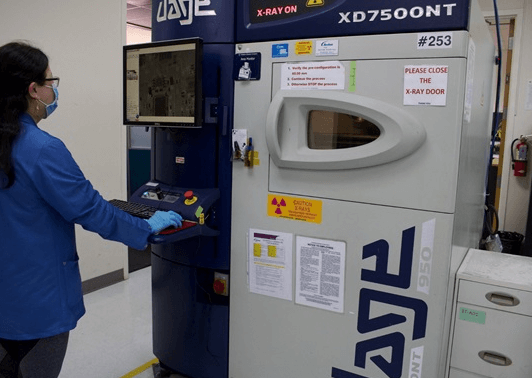
How PCB X-Ray Machines Enhance Fault Detection
Printed Circuit Boards (PCBs) are the backbone of modern electronic devices, serving as the foundation upon which intricate circuits are built. As technology advances, the complexity of these boards increases, making fault detection a critical aspect of the manufacturing process. One of the most effective tools for enhancing fault detection in PCBs is the X-ray machine. This sophisticated equipment offers unparalleled insights into the internal structure of PCBs, enabling manufacturers to identify and rectify defects that would otherwise go unnoticed.
The primary advantage of using PCB X-ray machines lies in their ability to provide non-destructive testing.
Traditional inspection methods, such as visual inspection or electrical testing, often fall short when it comes to detecting hidden defects. X-ray machines, on the other hand, can penetrate the layers of a PCB, revealing issues such as solder joint defects, component misalignments, and internal cracks. This capability is particularly crucial for multi-layered PCBs, where defects can be buried deep within the board and are inaccessible to conventional inspection techniques.
Moreover, PCB X-ray machines offer high-resolution imaging, which is essential for identifying minute defects that could compromise the functionality of the board.
The high level of detail provided by these machines allows for the detection of micro-cracks, voids, and other anomalies that are often missed by other inspection methods. This precision is vital for ensuring the reliability and performance of electronic devices, especially in industries where even the smallest defect can lead to significant consequences, such as aerospace, medical devices, and automotive sectors.
In addition to their diagnostic capabilities, PCB X-ray machines also contribute to the efficiency of the manufacturing process.
By identifying defects early in the production cycle, manufacturers can implement corrective measures before the boards are assembled into final products. This proactive approach not only reduces the likelihood of costly recalls and repairs but also enhances overall product quality. Furthermore, the use of X-ray machines can streamline the quality control process, as they can quickly and accurately inspect large volumes of PCBs, thereby increasing throughput and reducing inspection times.
Another significant benefit of PCB X-ray machines is their ability to facilitate root cause analysis.
When a defect is detected, the detailed images provided by the X-ray machine can help engineers understand the underlying cause of the issue. This insight is invaluable for improving manufacturing processes and preventing similar defects in future production runs. By enabling a deeper understanding of the factors contributing to defects, X-ray machines play a crucial role in continuous improvement initiatives and quality assurance programs.
While the advantages of PCB X-ray machines are clear, it is important to acknowledge that their implementation requires a certain level of expertise.
Operators must be trained to interpret the images accurately and to understand the limitations of the technology. Additionally, the initial investment in X-ray equipment can be substantial. However, the long-term benefits, including improved fault detection, enhanced product quality, and increased manufacturing efficiency, often outweigh these initial costs.
In conclusion, PCB X-ray machines represent a significant advancement in fault detection technology. Their ability to provide non-destructive, high-resolution imaging makes them an indispensable tool for modern PCB manufacturing. By enabling early detection of defects, facilitating root cause analysis, and improving overall product quality, these machines play a pivotal role in ensuring the reliability and performance of electronic devices. As technology continues to evolve, the importance of PCB X-ray machines in the manufacturing process is likely to grow, further solidifying their position as a cornerstone of quality assurance in the electronics industry.
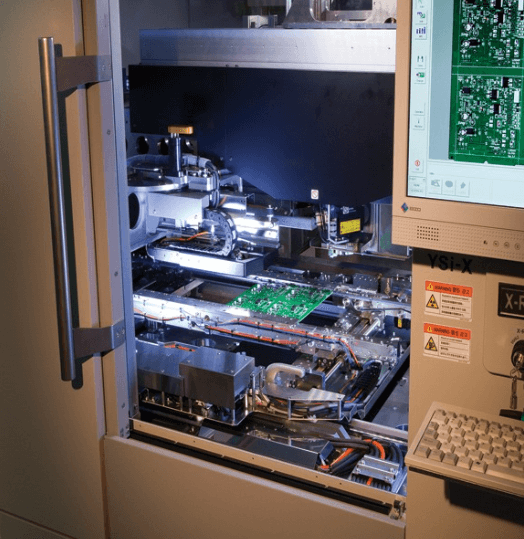
The Role Of PCB X-Ray Machines In Modern Electronics Manufacturing
Printed Circuit Boards (PCBs) are the backbone of modern electronic devices, serving as the foundation upon which all electronic components are mounted. As the complexity and miniaturization of electronic devices continue to advance, the need for precise and reliable inspection methods has become increasingly critical. One of the most effective tools in this regard is the PCB X-ray machine. These machines play a pivotal role in ensuring the quality and reliability of PCBs, which in turn, impacts the overall performance of electronic devices.
PCB X-ray machines utilize advanced imaging technology to inspect the internal structures of PCBs without causing any damage.
This non-destructive testing method is essential for identifying hidden defects that are not visible to the naked eye or through traditional optical inspection methods. For instance, solder joint integrity, which is crucial for the electrical connectivity and mechanical stability of components, can be thoroughly examined using X-ray imaging. By detecting issues such as voids, cracks, and misalignments in solder joints, manufacturers can address potential problems before they lead to device failures.
Moreover, the increasing complexity of PCBs, characterized by multi-layered designs and densely packed components, necessitates the use of sophisticated inspection techniques.
PCB X-ray machines are capable of penetrating multiple layers of a board, providing detailed cross-sectional images that reveal the internal configuration and any anomalies present. This capability is particularly important for high-density interconnect (HDI) boards, which are commonly used in advanced applications such as smartphones, medical devices, and aerospace electronics. By ensuring the integrity of these intricate designs, X-ray inspection helps maintain the high standards required in these critical industries.
In addition to defect detection, PCB X-ray machines also play a crucial role in process optimization and quality control.
By providing real-time feedback during the manufacturing process, these machines enable manufacturers to fine-tune their production parameters and improve yield rates. For example, by analyzing the X-ray images of solder paste deposits, manufacturers can adjust the printing process to achieve optimal solder volume and placement. This proactive approach not only enhances the overall quality of the PCBs but also reduces the likelihood of costly rework and scrap.
Furthermore, the integration of advanced software and automation capabilities in modern PCB X-ray machines has significantly enhanced their efficiency and usability.
Automated defect recognition (ADR) systems can quickly and accurately identify defects, reducing the reliance on manual inspection and minimizing human error. Additionally, the ability to store and analyze large volumes of inspection data allows manufacturers to track trends, identify recurring issues, and implement continuous improvement initiatives. This data-driven approach is essential for maintaining competitiveness in the fast-paced electronics manufacturing industry.
The role of PCB X-ray machines extends beyond the manufacturing floor.
In the realm of research and development, these machines are invaluable for prototyping and testing new designs. By providing detailed insights into the internal structures of experimental PCBs, X-ray inspection facilitates the iterative design process and accelerates time-to-market for new products. Moreover, in the field of failure analysis, X-ray machines are indispensable for diagnosing the root causes of device malfunctions, enabling engineers to develop effective corrective actions and prevent future occurrences.
In conclusion, PCB X-ray machines are indispensable tools in modern electronics manufacturing, offering unparalleled capabilities for defect detection, process optimization, and quality control. As electronic devices continue to evolve in complexity and functionality, the importance of reliable and precise inspection methods will only grow. By leveraging the advanced imaging technology of PCB X-ray machines, manufacturers can ensure the integrity and performance of their products, ultimately contributing to the advancement of the electronics industry as a whole.

Key Features To Look For In A PCB X-Ray Machine
When selecting a PCB X-ray machine, it is crucial to consider several key features that can significantly impact the quality and efficiency of your inspection processes. One of the primary aspects to evaluate is the resolution of the X-ray imaging system. High-resolution imaging is essential for detecting minute defects and ensuring the integrity of intricate PCB designs. Machines with superior resolution capabilities can reveal fine details, such as micro-cracks, voids, and misalignments, which are often imperceptible to the naked eye or less advanced inspection methods.
In addition to resolution, the versatility of the X-ray machine is another critical factor.
A versatile machine should accommodate various PCB sizes and types, from small, densely packed boards to larger, more complex assemblies. This adaptability ensures that the machine can be used across different projects and applications, providing a comprehensive inspection solution. Furthermore, the ability to adjust the X-ray beam angle and intensity can enhance the inspection process by allowing for more detailed and targeted examinations of specific areas on the PCB.
Another important feature to consider is the software that accompanies the X-ray machine.
Advanced software capabilities can greatly enhance the functionality and user experience of the machine. Look for software that offers intuitive user interfaces, automated defect detection, and comprehensive analysis tools. Automated defect detection can save time and reduce human error by quickly identifying potential issues, while robust analysis tools can provide in-depth insights into the nature and severity of detected defects. Additionally, software that supports data logging and reporting can be invaluable for maintaining quality control records and facilitating traceability.
The ease of use and ergonomics of the PCB X-ray machine should not be overlooked.
A user-friendly machine with straightforward controls and clear instructions can significantly reduce the learning curve and increase productivity. Ergonomic design features, such as adjustable viewing angles and comfortable workstations, can also enhance the operator’s experience and reduce fatigue during prolonged inspection sessions. Moreover, machines that offer remote operation capabilities can provide added flexibility, allowing operators to control the inspection process from a distance or even from different locations.
Safety is another paramount consideration when choosing a PCB X-ray machine.
Given the potential hazards associated with X-ray radiation, it is essential to select a machine that complies with relevant safety standards and regulations. Features such as lead shielding, interlock systems, and radiation monitoring can help ensure the safety of operators and other personnel. Additionally, machines that offer comprehensive training and support services can further enhance safety by ensuring that operators are well-informed about proper usage and safety protocols.
Lastly, the reliability and maintenance requirements of the PCB X-ray machine should be carefully evaluated. A reliable machine with a proven track record of performance can minimize downtime and ensure consistent inspection quality. It is also beneficial to choose a machine from a reputable manufacturer that offers robust customer support and readily available spare parts. Regular maintenance and calibration are essential for maintaining the accuracy and longevity of the machine, so consider the ease of performing these tasks and the availability of professional maintenance services.
In conclusion, selecting the right PCB X-ray machine involves a thorough assessment of various features, including resolution, versatility, software capabilities, ease of use, safety, and reliability. By carefully considering these factors, you can ensure that you choose a machine that meets your specific inspection needs and provides reliable, high-quality results.

